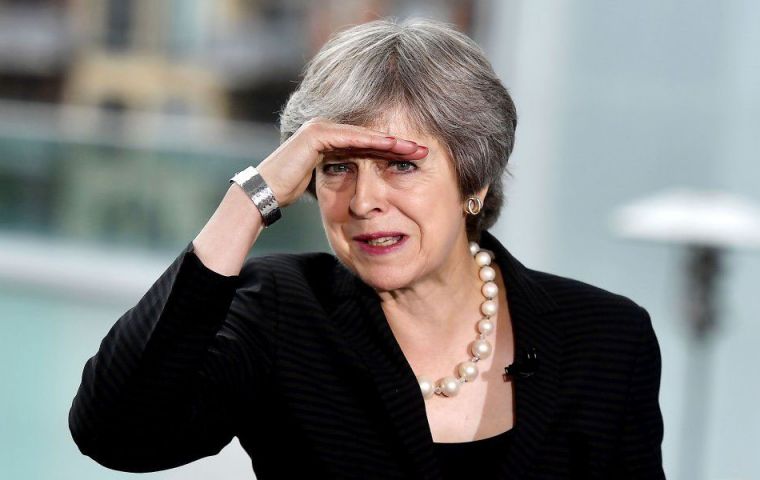MercoPress. South Atlantic News Agency
What is next for the Brexit Negotiations?
 PM Theresa May is safe from a leadership challenge, having just survived one, but could take the consistent rejection of her deal as her cue to resign.
PM Theresa May is safe from a leadership challenge, having just survived one, but could take the consistent rejection of her deal as her cue to resign. This week MPs in the UK voted against Prime Minister Theresa May’s proposed Brexit deal, but also voted against leaving the European Union without a deal of some sort. This means that May must apply for an extension to Article 50, which is the transition plan enacted by any member state that wants to withdraw from the EU.
Assuming the EU agrees to the extension, which the Prime Minister has indicated would be for around three months, the UK has several courses of action.
Theresa May could simply put her deal to a vote again. It has already been rejected twice, but the margin – while still considerable – was smaller the second time. Currently it looks as if this is Mrs May’s most likely course of action.
No deal is still a possibility. At the end of the extension period, the UK would still leave the EU even if no agreement is in place.
The UK Government would have to take further steps to stop that happening. The UK could attempt to negotiate an entirely new deal, even though the EU has declared that talks are over.
Alternately a second referendum could be called, to see if the British public still wants Brexit. Experts estimate this would take a minimum of 22 weeks.
However, the course that Brexit has taken has proved unpredictable so far, and many rumors are swirling around Theresa May’s future. She is safe from a leadership challenge, having just survived one, but could take the consistent rejection of her deal as her cue to resign.
Or at any point Labour could call a vote of no confidence. If they are successful, that could lead to another General Election. (PN).




Top Comments
Disclaimer & comment rulesCommenting for this story is now closed.
If you have a Facebook account, become a fan and comment on our Facebook Page!